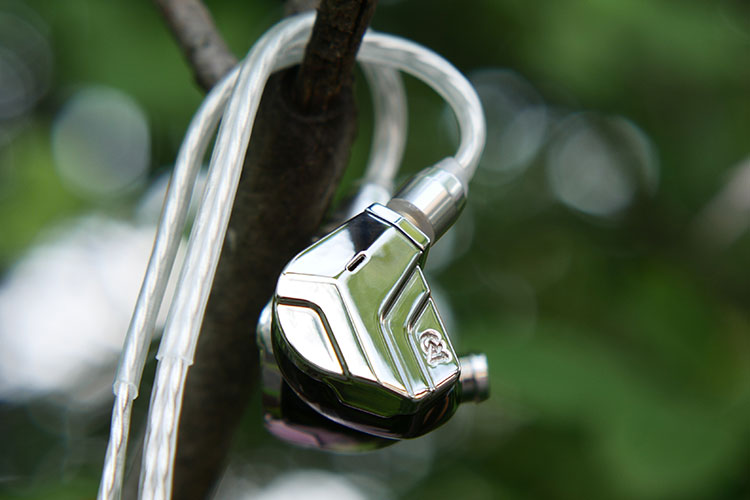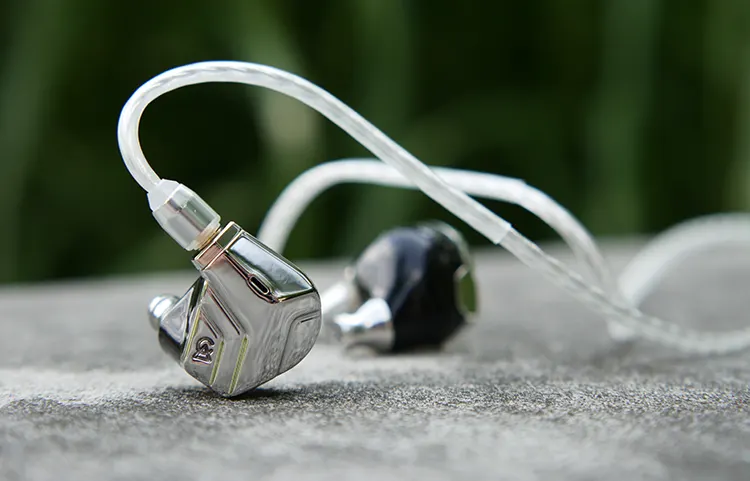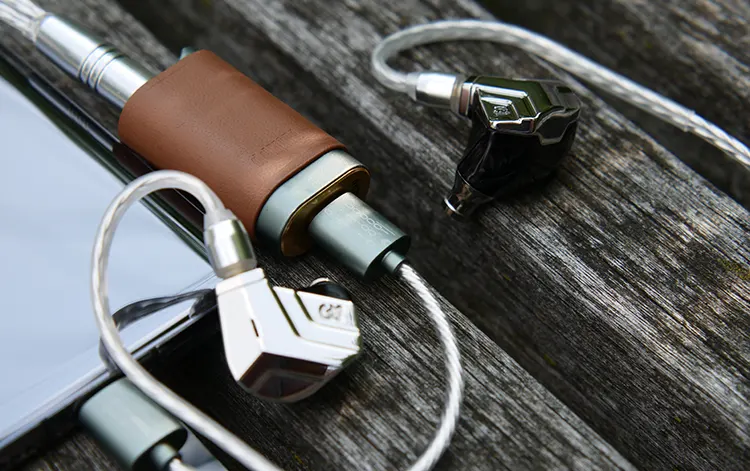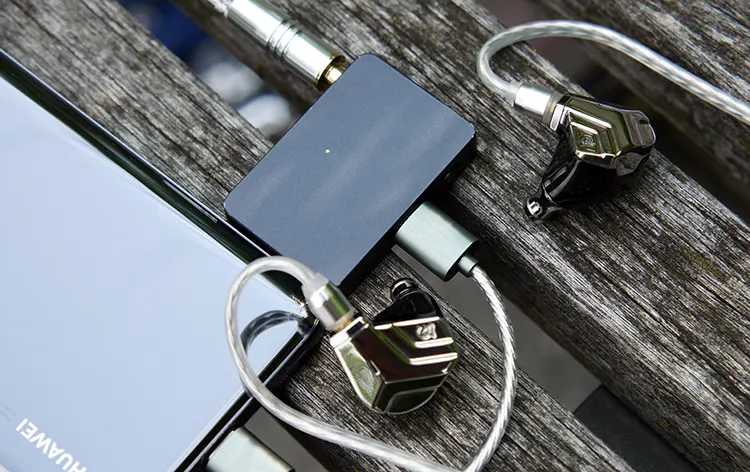Sound Impressions
Summary
The Astrolith has a vibrant tune with strong bass, energetic highs, and a prominent mid-range that keeps up with the rest of the signature.
Fans of Campfire Audio’s boisterous house sound will feel right at home with the Astrolith while experiencing the added benefits of an exceptionally low THD and rapid impulse response inherent to the planar design.
The dual planar setup is smooth throughout the range and presents music with a competent effortlessness that feels at home at low to blisteringly high volumes.
Like Campfire Audio’s other planar models, the Astrolith can comfortably handle any genre, be it slow and melodic, or brash and grungy.
The small 6mm planar handles the highs with great precision and clarity with impressive extension, while the massive 14.2mm planar gives the Astrolith a textured, powerful bass.
Their combined presence gives the Astrolith a naturally rich timbre that should satisfy those who avoid the breathy, plasticky qualities often heard in armature-equipped earphones.
Bass
Thanks to the large 14.2mm planar, the Astrolith’s low end is clean and tight but is in no way lacking in quantity. It is elevated well above neutral with a strong sub-bass region that results in a visceral, head-pounding presentation.
The midbass region is prominent but not overpowering, though I find in rare instances notes will bloom and sound slightly bloated. Thankfully, it doesn’t affect the lower mids beyond adding some warmth that contributes to the natural output.
The texturing inherent to this driver is outstanding, with fine details showing themselves clearly. This combines with the visceral presentation to give tracks a highly dynamic feel with plenty of depth and nuance.
Speed is another strong suit, which should come as no surprise from a planar driver. The Astrolith can dance through rapid, congested basslines with the nimbleness of an armature or tiny dynamic driver, but here it is distortion-free.
Mids
I found the midrange of the Astrolith to sit slightly behind the other frequencies, but not to the extent where it is drowned out or fighting for presence. Vocals and instruments remain clear and coherent, even on tracks that bias other regions.
Since the mid-bass region adds some warmth to the mids, it has a natural presentation with a moderate amount of weight and body applied to the vocals.
This helps the Astrolith perform equally well with male or female vocalists, especially those with unique styles or qualities, such as Aurora.
Sibilance is present in the Astrolith, but only where it is already baked into a track. Excessive sibilance is minimized considerably which is a fantastic quality, further adding to the Astrolith’s versatility.
The Astrolith is a detail monster with aspects like the light rubbing of fingers along the body of a guitar, or an artist wetting their lips between verses being audible to the astute listener.
This also translates into impressive vocal coherence on duets enabling you to hone in on a specific artist and follow their part exclusively.
Treble
The new 6mm planar provides an impressive treble experience and highlights the top-tier dynamic range of this dual-planar setup. There is no audible roll-off that could dull a track’s vibrancy.
The balance of presence and brilliance regions is handled well with the Astrolith avoiding harshness and grating qualities and sounding overly fatiguing. It produces a pleasing amount of shimmer and sparkle while excelling in clarity and note definition.
Notes are airy and spacious with clearly defined borders, helping the Astrolith remain composed during high-energy, busy tracks.
The presentation here is reminiscent of electrostatic or ceramic tweeters, but without the aggression I find common to those driver types, the latter especially.
Given the impressive impulse response of this tiny planar driver, it comes as no surprise that it is extremely quick and well-controlled. Notes attack with confidence and decay quickly, ensuring they do not blend or smear together, regardless of what’s happening at the time.
While the Astrolith doesn’t have a traditionally analytic tune, you can treat it as such to pick apart specific elements and layers to a track, though I’d recommend EQ’ing out some of the bass to make this easier.
Staging & Dynamics
Admittedly, I have not been overly impressed with the stage size of several recent products from Campfire Audio.
Maybe I was spoiled by Andromeda and Solaris which were exceptional in this regard and unfairly carried those expectations over to everything that came afterward.
Well, the Astrolith completely lives up to expectations with a cavernous stage that is more reminiscent of a good pair of on-ear headphones than an in-ear.
The default vocal positioning sits just outside the outer ear, leaving plenty of space for intimate sounds to close in, and distant sounds to spiral off into the distance.
The stage is well-rounded too with near equal levels of width and depth, height being the trailing factor. This gives track elements plenty of space to move and shift with nuanced, accurate channel-to-channel movement.
Off-center accuracy is excellent, with small shifts being trackable. Movement to the outer edges of the stage also remains smooth and nuanced, without any vagueness entering the picture.
Layered track elements come through clearly, while instrument separation is also top-tier. These qualities give Astrolith’s stage a dynamic presentation since it has genuine depth and nuance to the space in which track elements reside.
Using the Astrolith with competitive online shooters like Counter Strike or PUBG is fun since you can follow your opponent’s footsteps and set ambushes.
With games like War Thunder, immersion is enhanced by the sounds of shells accurately ricochetting, locational explosions, and other effects that place you within the war zone.
Synergy
Efficiency
The Astrolith requires 44.9 mVrms to hit 94 dB @ 1 kHz and has an impedance of 8.2Ω@ 1 kHz.
Unlike Campfire Audio’s other planar-equipped models, I found the Astrolith reflected the sonic qualities of the source in the signature you heard.
If pairing it with a brighter, more analytic source, the Astrolith would take on those qualities, and likewise with a darker, less technically impressive source.
Impedance adapters like the iFi iEMatch, or impedance filters like the one in my TEAC HA-501 desktop amp, also modified the Astrolith’s sound. The iEMatch dulled some of the upper treble energy while restricting bass quantity.
The filter system in my HA-501 on ‘high’ would make the Astrolith brighter and livelier while dropping it to ‘low’ would restrict the highs and provide a darker, more bass-focused experience.
I found it sounded best on ‘mid’ which best matched the signature output of my portable sources for the Astrolith.
Thankfully, background hiss was not heard through any of my sources, though the usual culprit caused one issue. The Earstudio HUD100’s high output port intended for use with hard-to-drive headphones, not portable earphones, caused a whining sound to be always heard in the background.
Overall, the Astrolith is easy to drive from almost any source, just be sure to consider the default signature of said source as it could positively or negatively affect your experience.
Pairings
Since the Campfire Audio Astrolith is source-sensitive I ran it with my most neutral, or organic-sounding sources to ensure the outgoing signature was affected as little as possible.
I chose the Earstudio HUD100 in its neutral bypass mode, the TEAC HA-501 with the filter set to ‘mid’, and the ddHiFi TC44C for its balanced out.
ddHiFi’s TC44C worked well with the Astrolith. With plenty of power, a black background, and a mostly neutral signature that leans warm, it did little to alter the base signature of the Astrolith.
I found its balanced output a better match. It sounded more dynamic with greater bass depth and impact, and the soundstage was more open and airier with better spacing between instruments.
Shifting back to a single-ended setup in the Earstudio HUD100’s standard output port, I preferred the Astrolith with this pairing.
While there was no noticeable difference in end-to-end extension, soundstage, or other staging qualities, the HUD100 further improved the Astrolith’s impressive detail levels and enhanced its low-end texturing.
Midrange clarity was reduced slightly; however, it was not anywhere near enough to hinder the listening experience.
The TEAC HA-501 with the damping filter set to mid provided the best experience overall. The additional power available resulted in the Astrolith’s drivers benefiting from greater control, snappier decay and attack qualities, and more impactful bass notes.
Extremely congested tracks were even clearer, and the staging opened even more to give the Astrolith a more headphone-like presence to the presentation. Lastly, the output was even smoother and more refined.





